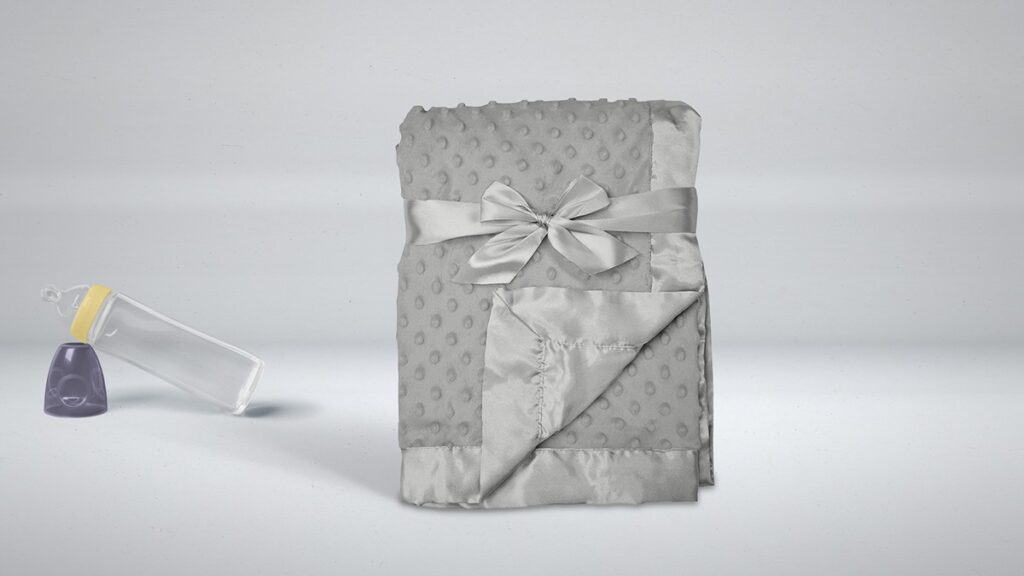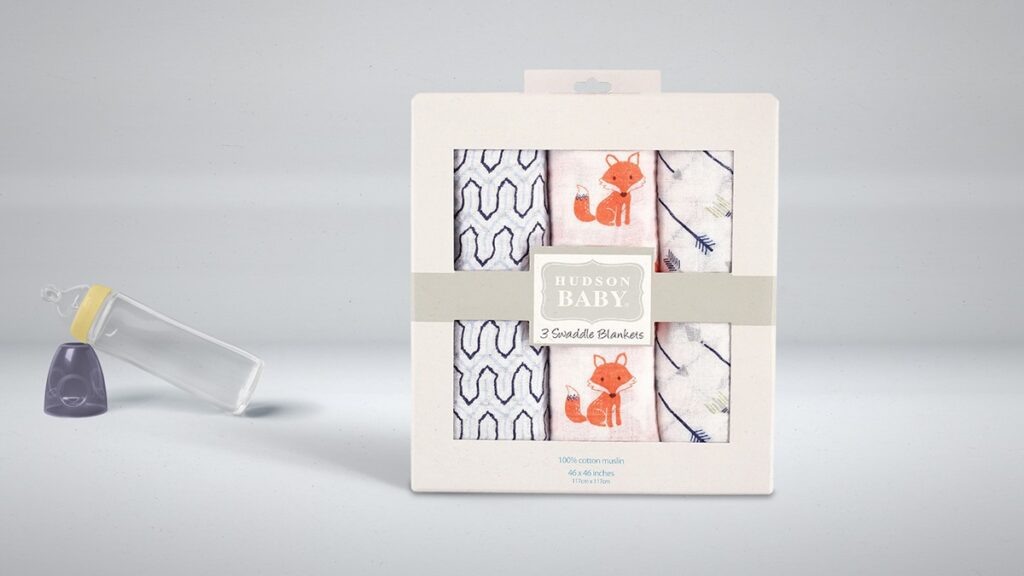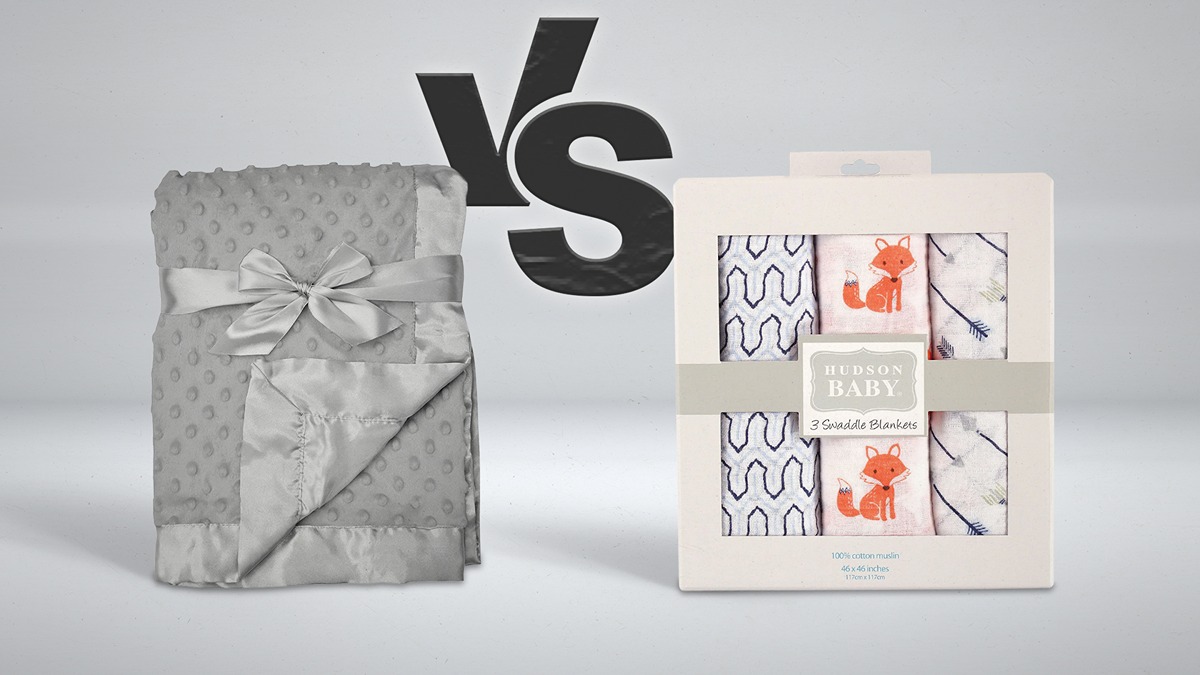If you are a soon-to-be mother, you probably can’t wait to hold your newborn in your arms. When you give birth in a hospital you will notice that the second time around they bring your baby over for feeding, it is wrapped in a cozy-looking blanket.
After this, you probably start thinking about the baby blankets you got at home. Are they suitable, too big, too small, too soft, or not soft enough? Don’t worry, I got you. Let’s explore the baby blanket world together by talking about receiving blankets vs muslin.
Main Points
- Receiving blankets is the first thing that your baby gets wrapped in the hospital.
- Receiving blankets are usually made from cotton.
- Babies like to be swindled because it reminds them of being in their mother’s womb.
- Muslin is a soft fabric that is used to make baby blankets.
- Muslin is very breathable and lightweight which makes it perfect for babies.
Receiving blanket vs muslin – A head-to-head comparison
Swaddling
The process of wrapping a baby in a blanket is called swaddling. It is an old practice that has been used for hundreds, if not thousands of years, with the only difference probably being the material used for wrapping.
Swaddling is used to soothe your baby due to its calming effect on newborns. Some people believe that this is the case because the tightly wrapped blanket reminds the baby of being in its mother’s womb.
Safety
As I said swaddling is very effective in calming down your newborn. It is considered to be generally safe and some even report that it can reduce the chances of sudden infant death syndrome also known as SIDS(source).
However, you do need to follow some general guidelines and know when it’s time to stop using this practice. Make sure that after you swaddle your newborn you lay it on its back on a firm mattress that doesn’t have any extra sheets or blankets on it.
Another important factor is that you should stop wrapping your baby in a blanket as soon as it starts to move around and roll over. The time it will take for your baby to develop certain motor skills that allow it to roll over may vary, but it’s usually around the age of 4 mounts.
Receiving blanket

A receiving blanket gets its name because it’s used to “receive” newborns. Let me explain. After a baby is delivered the nurses will wrap the baby in a receiving blanket to dry it up and keep it warm and cozy. This is where the name receiving comes from.
These blankets are very soft and smaller than standard blankets. They are usually around 30 inches in length and width. They can be made from cotton or flannel, and the thinner ones are usually made from muslin.
If you live in the US, you have probably seen a newborn wrapped in a blue and pink striped blanket. This is a flannel receiving blanket used by many hospitals. They are made by a company called Medline which is a medical supply manufacturer.
These types of receiving blankets are used in hospitals because they are the perfect size for a newborn, they are gender-neutral, absorbent, and soft. All these characteristics are something you want to look for when getting a receiving blanket for your newborn.
Receiving blankets are sometimes made from cotton. This fabric is picked because it’s absorbent, soft, breathable, and has hypoallergenic properties.
Muslin blankets

Muslin is actually a fabric made from cotton that is woven in a plain weave. This makes the fabric very breathable and lightweight even though it can vary in thickness. It’s soft, durable, and versatile making it the perfect fabric for a baby blanket.
A possible downside can be that it is absorbent so stains can be difficult to remove and it wrinkles easier than cotton fabrics.
The muslin baby blanket I used, and still have to this day is this one.
Difference between the two
Muslin blankets are often bigger than receiving ones, this allows you to swaddle your baby with more layers at once. On the other hand, if you are not skilled in wrapping your newborn yet, a receiving blanket can be a better option in order not to have loose ends from the untucked fabric.
When it comes to receiving blankets vs muslin, this is about where the differences stop. The best explanation is that muslin is a type of cotton fabric that is woven in a particular way, as we already discussed. A receiving blanket on the other hand is an object that can be made from different fabrics including muslin.
So considering this, a muslin blanket can be a receiving blanket, but not all receiving blankets are made from muslin.
A receiving blanket can also be made from cotton but using a different woven pattern, like flannel for example. The reason cotton is mainly used for making baby blankets is that it’s soft, natural, absorbent, and hypoallergenic. Depending on the type of fabric, cotton can be made to be very lightweight.
What fabric is the best for swaddling?
We already talked about how tricky is to compare a receiving blanket vs muslin, but now let’s talk about what is the best option for your baby. Parents will of course have different preferences, but I personally recommend you use a muslin receiving blanket to swaddle your baby.
The muslin fabric is soft, breathable, and stretchy which will allow your baby to feel more comfortable and allow you to get the hand of swindling.
Technique
If you are wondering how to successfully swindle your baby, I got you. You just need to follow a few easy steps.
First, fold your blanket into a triangle putting together two opposite corners of the fabric together. Then put the baby on its back in the middle of the longest side of the triangle. The shoulders of your baby should be placed where the fabric ends.
The next step is to grab one corner of the triangle and, wrap the fabric over the arm, tucking it under the opposite side. Repeat his step with the other corner and there you have it.
Make sure that the blanket isn’t too tight though. That’s why I recommend muslin blankets. They are stretchy which allows the baby not to feel like it’s being squeezed too hard.
Conclusion
If all this talk about receiving blankets vs muslin and swindling is confusing you, let me simplify.
A receiving blanket is called that because of what it’s used for, and a muslin blanket it’s called that because of the fabric it’s made from. A swaddling blanket can be any type of blank used for the purpose of swindling.
This can be also said about receiving blankets, they can be made from different types of fabric including muslin. So remember, a muslin blanket can also be a receiving blanket depending on what you use it for, but not all receiving blankets are made from muslin fabric.

When it comes to raising children, there’s a lot to learn! I’m here to share everything i learnt along the way.

